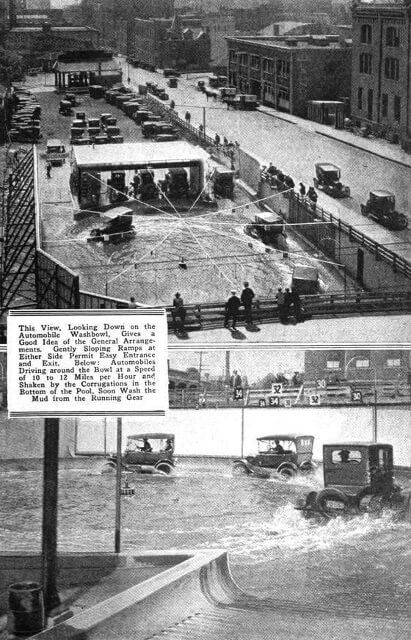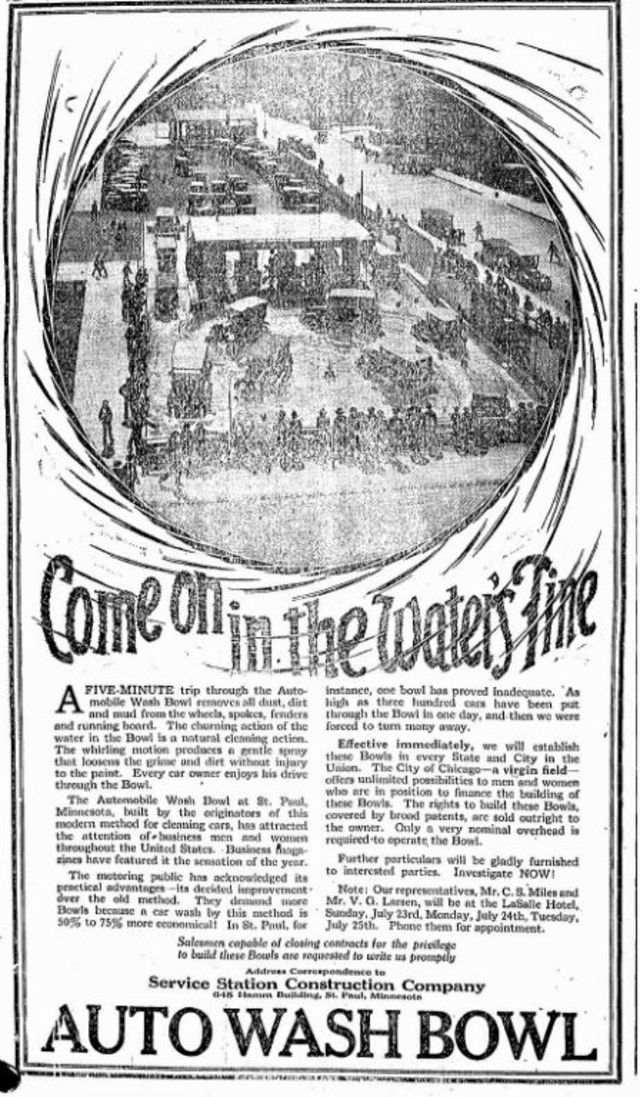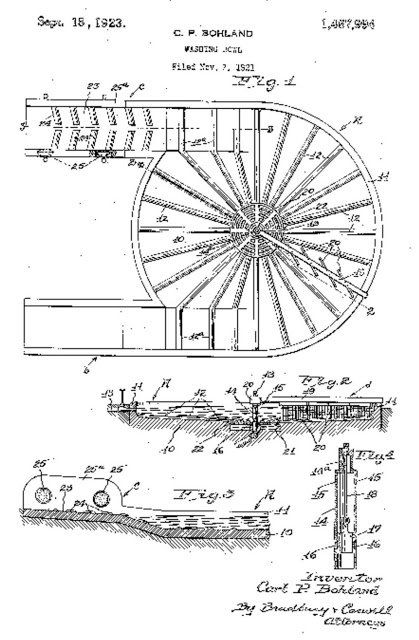Auto Wash Bowl
A piece of history
The photo on the right is from 1924, showing a new type of
car wash located at the northwest corner of 42nd Street and South Michigan Avenue, Chicago.
At that time there was at least one other automatic wash bowl in Chicago. The concept originated in St. Paul, Minnesota. It was patented in 1921 by inventor CP Bohland, who opened two branches in St. Paul. He invented the bowl as an easy way to remove mud from the bottom of cars. During this time, roads were often unpaved and muddy and the mud would get stuck on the bottom and wheels. A spin in the Auto Wash Bowl removed the mud from the bottom of the car.
On one of the photos on the left you can see the patent of C.P. Bohland from 1921.
The 24-meter-wide, ribbed concrete bowl was approximately 16 inch at its deepest point. Customers paid 25 cents to a clerk who tied a protective rubber cover over the radiator. The cars entered the bowl via a ramp and then drove in circles in the basin at a speed of approximately 10 mph per hour. The ridges in the concrete would vibrate the car and the water, creating a sloshing motion that helped wash all the mud off the chassis and wheels.
The process took about 5 minutes. After leaving the bowl, customers could opt for a complete wash. In one of the bays (similar to a wash box) the rest of the car was cleaned. On a busy Saturday, about 75 cars per hour went through the wash basin.
When the idea proved successful in St.Paul, Bohland began advertising in other cities to franchise his Wash Bowl. The first branch outside of St. Paul was Chicago. C.G. Burkhartsmeier became the franchisee. He built an establishment with a gas station in 1924 at the cost of $20,000.









